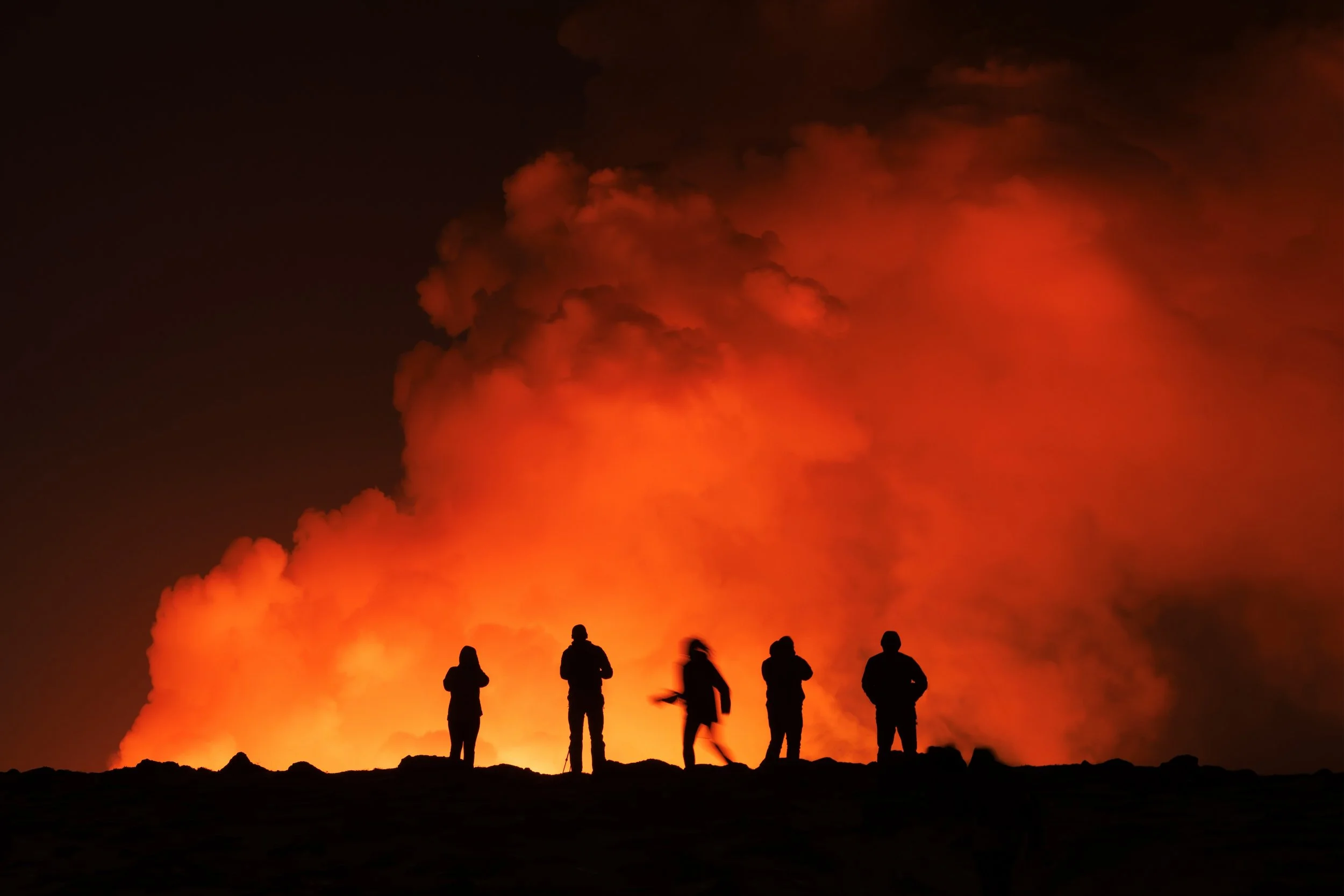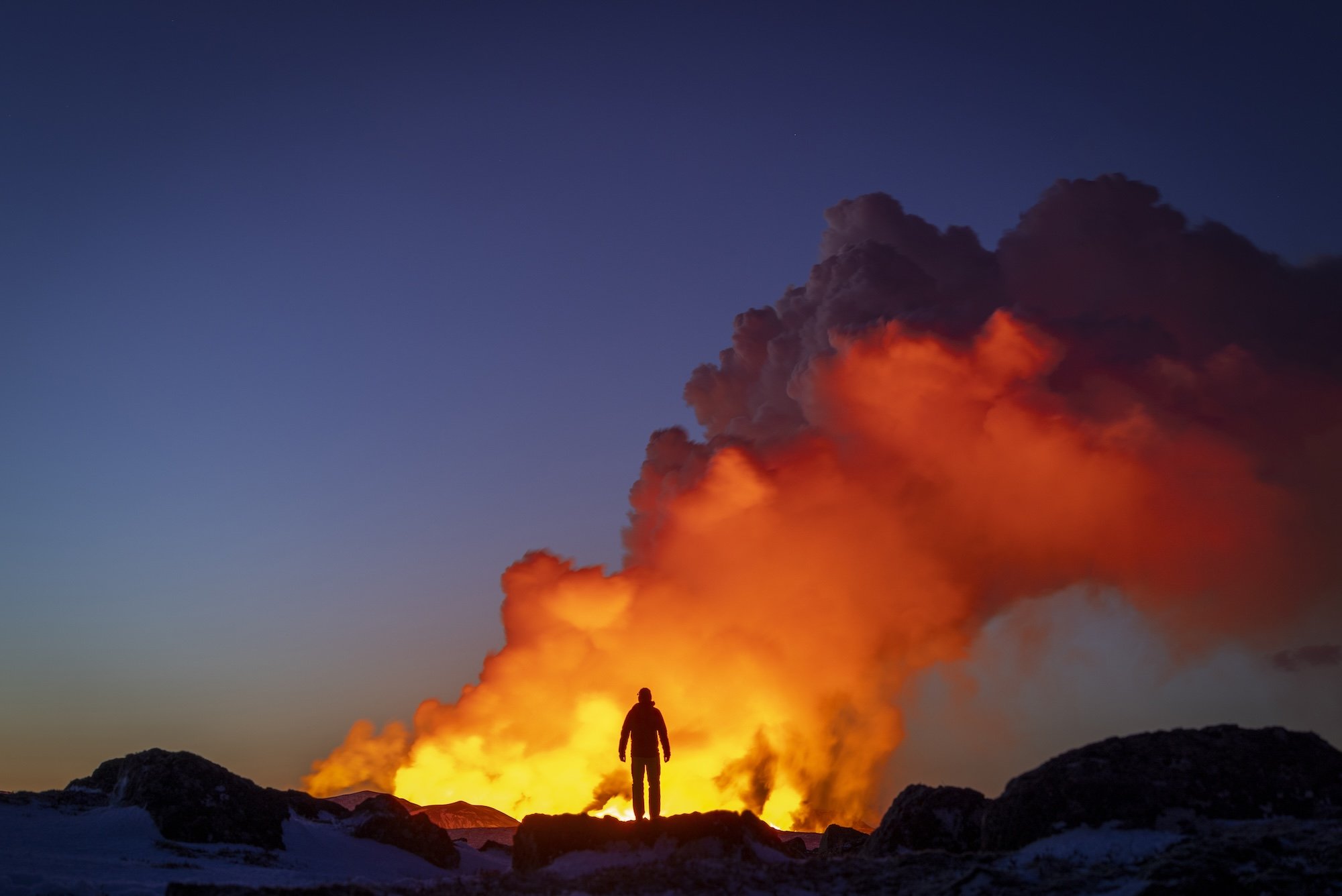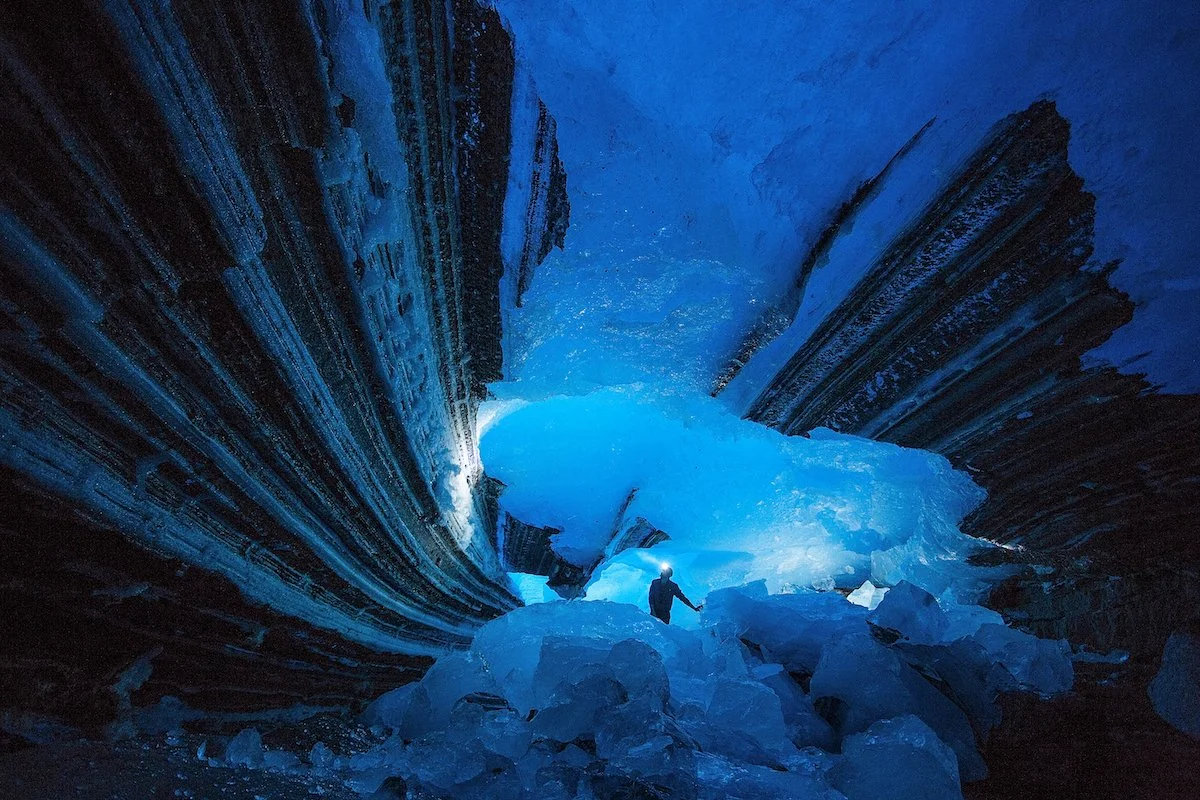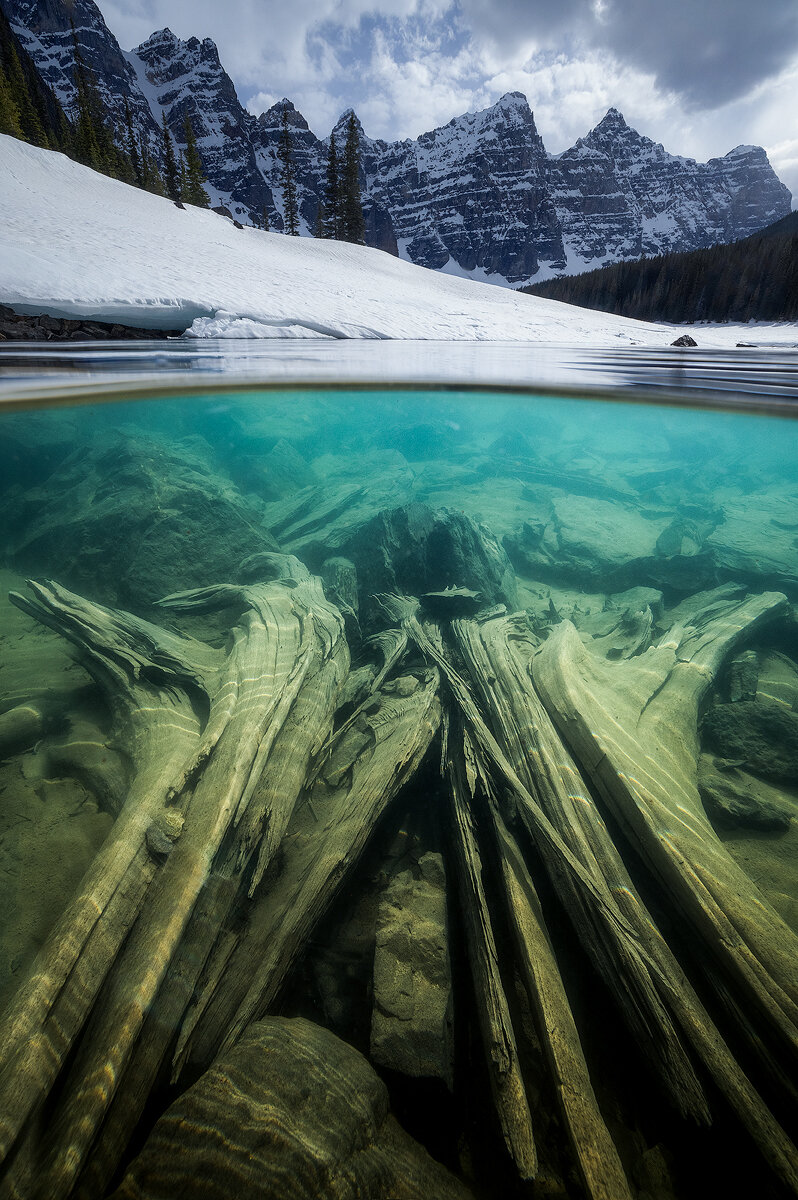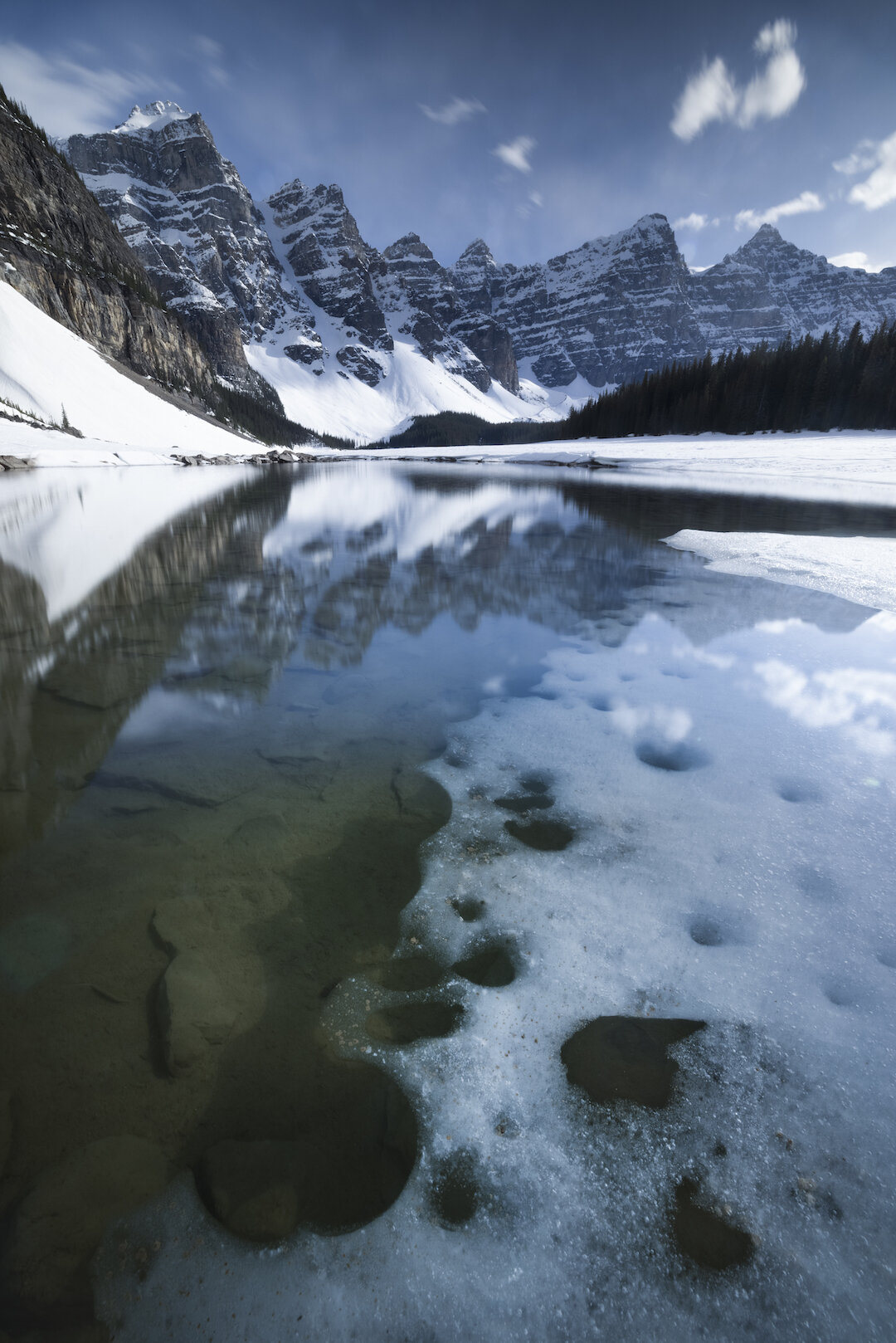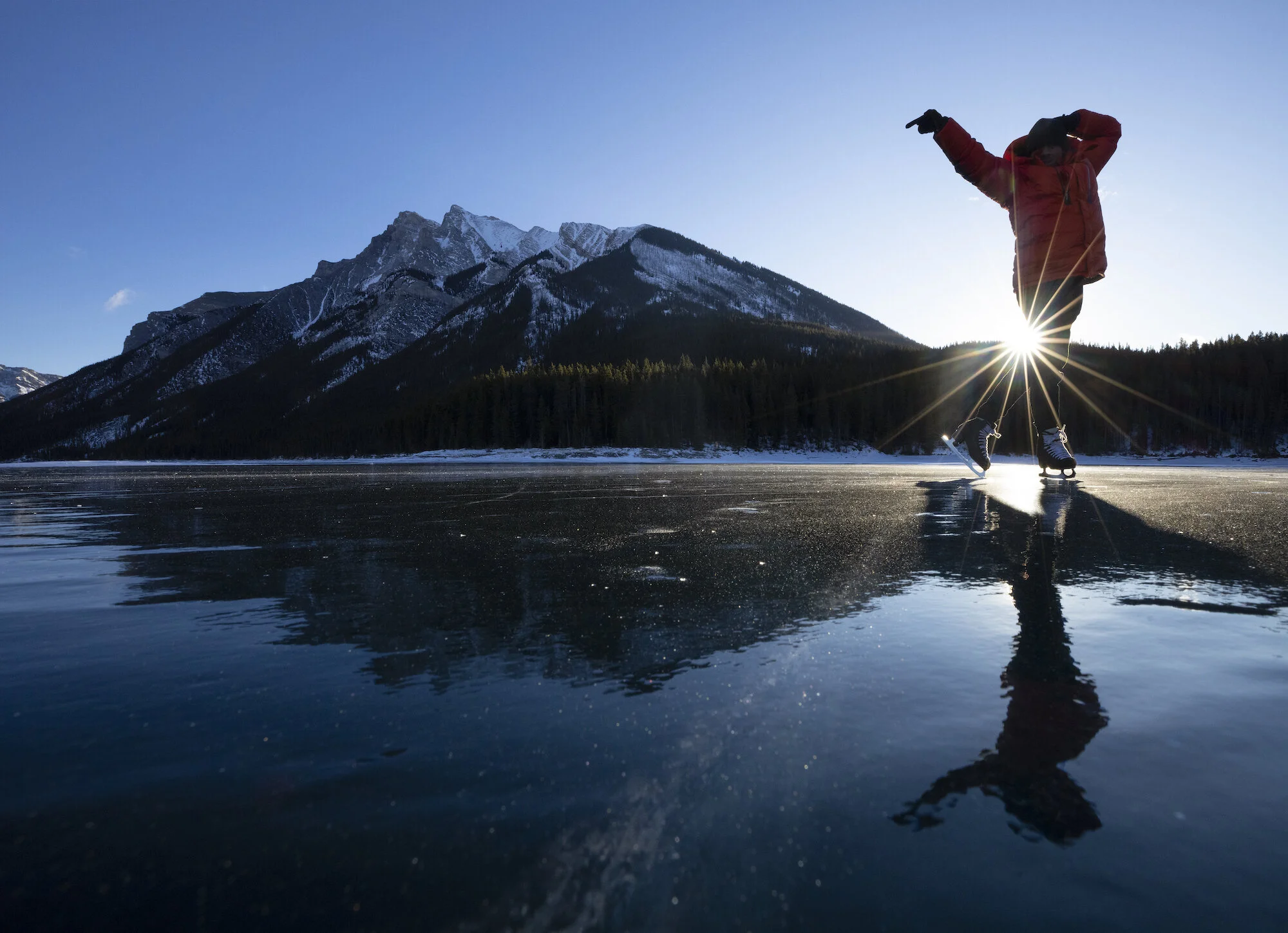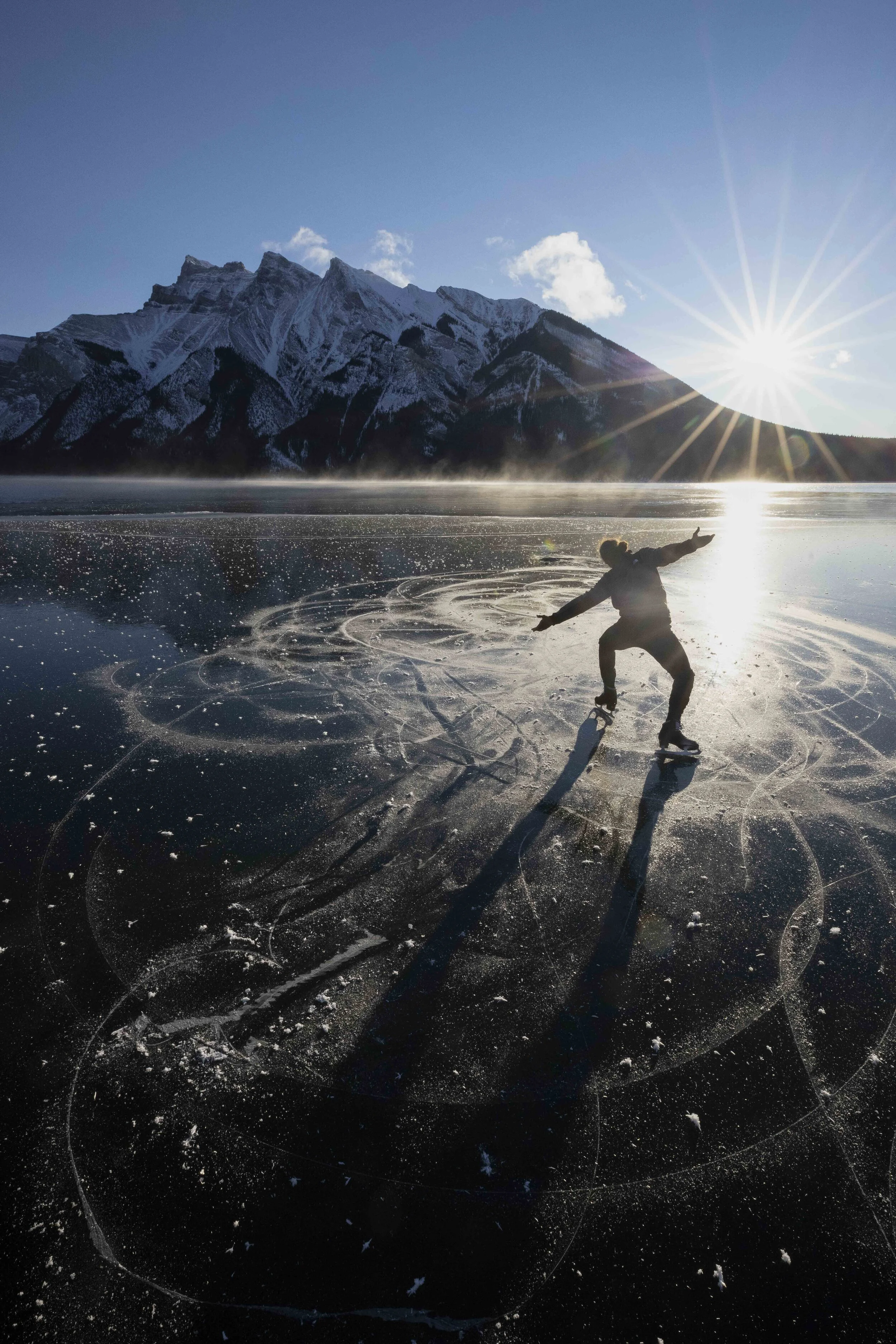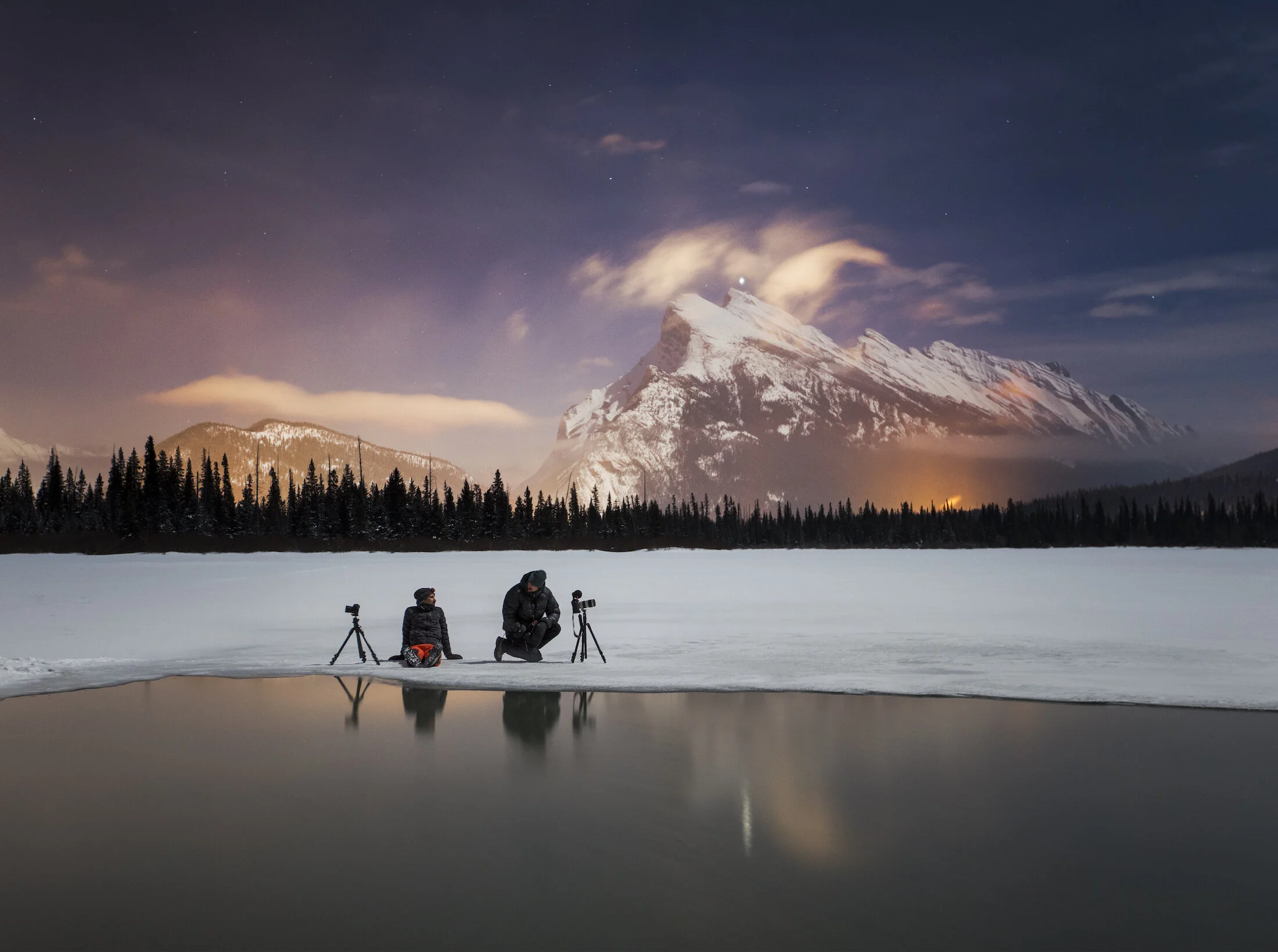
A New Approach to Social Media
As we’ve all discovered, especially in recent years, social media has transformed into something that goes well beyond simply sharing. The algorithms have hard-wired us to repackage wilderness experiences for consumption. Video became the best tool in our kit. We have been taught that to survive as a photographer, we must be “content creators,” not only capturing the scene but also what’s happening behind the scenes. I have enjoyed many parts of that process, but I don’t like the motivations behind it — reducing the creative journey to online metrics and marketability taints the process and the wilderness experience, both for the artist and the audience.
OFFICIAL STATEMENT
A NEW APPROACH TO SOCIAL MEDIA
There’s a tension in what we do as outdoor-inspired artists and creators. We head into the wilderness to experience it fully — the silence, the vastness, the beauty. But at the same time, we feel the pull to document and share those moments. Sharing our work can be an important part of the artistic process. For that reason, I was an early adopter of social media.
What a journey it’s been. I have had the good fortune of meeting so many incredible people and witnessing how others show up for my work. This has been a truly global community that has helped to keep me buoyant through the ups and downs of running a photography business.
Yet, as we’ve all discovered, especially in recent years, social media has transformed into something that goes well beyond simply sharing. The algorithms have hard-wired us to repackage wilderness experiences for endless consumption. Video became the best tool in our kit. We have been taught that to survive as a photographer, we must be “content creators,” not only capturing the scene but also what’s happening behind the scenes. I have enjoyed many parts of that process, but I don’t like the motivations behind it. It reduces the creative journey to online metrics; marketability taints the process and the wilderness experience, both for the artist and the audience.
I’ve grown tired of the ever-growing demands on social media that go beyond sharing my work, fulfilling contracts with my valued clients, and inviting people into a conversation. There is pressure to think in terms of engaging captions, post performance, followers, and content creation. These concepts don’t only conflict with an artistic approach, but also present an inevitable contradiction for anyone who cherishes a life centered around nature. This kind of content creation takes time away from the things I love most about the outdoor experience.
And then, there’s the fact that algorithms are constantly moving the goalposts. From what I’ve gathered from analytics, for example, much of my audience on Facebook isn’t seeing my work. My metrics show that, in general, even the “best-performing” posts are reaching 5% of my audience. What was once a way to share my work now feels like a constant struggle against a system that doesn’t serve me.
As the mental load of meeting these demands grows increasingly unsustainable, I want to return to using social media on my own terms.
So I’m stepping back — not disappearing, just recalibrating and steering things in a new direction to focus on quality and community. As a first step, I will no longer be posting on my Facebook Page by the end of May 2025. Instead, I will be focusing my efforts on other platforms, in particular Substack, which is where I want to consolidate my online activity. I plan to reduce how often I post and instead look for ways to engage meaningfully with my community.
I’m not here to tell anyone else what to do, only to be honest about where I’m at. This is what feels right. And if my work reaches fewer people, but resonates more deeply, that is more important to me than numbers.
With that, I want to stay connected with you. It will take time to find that sweet spot, especially for those of us who have long relied on it for our business, who have dependents, and so on. This is the first of many steps towards what I hope will be a more sustainable relationship with the online world, and a return toward true connection, both with people and wild places.
For now, here’s where I’m hoping to develop stronger, more meaningful communities:
→ I encourage you all to subscribe to Fuelled by Creativity on Substack (free and paid options) and consider downloading the Substack app to experience all of the benefits of this platform. Check it out here first.
→ For those of you on Facebook, please follow my Profile instead (Use the Follow option on my profile, not Friend Request).
→ I will also remain active on Instagram, LinkedIn, and 500px.
Documenting the Sundhnúkagígar Eruption in Iceland
Iceland has long captivated me with its dramatic landscapes shaped by volcanic activity. Even before I became a photographer, I was enthralled by this island. At the conclusion of my undergrad in Earth and Ocean Sciences, I walked across Iceland and became familiar with its rugged terrain. Since then, I have returned several times, including this month when the Sundhnúkagígar eruption occurred.
Iceland has long captivated me with its dramatic landscapes shaped by volcanic activity. Even before I became a photographer, I was enthralled by this island. At the conclusion of my undergrad in Earth and Ocean Sciences, I walked across Iceland and became familiar with its rugged terrain. Since then, I have returned several times, including this month when the Sundhnúkagígar eruption occurred.
Our OFFBEAT group capturing the eruption later on the day we were evacuated, from a safe distance. Photo: Paul Zizka.
I was staying at the Northern Light Inn with a group, co-leading an OFFBEAT photography workshop, when on our last morning we were awoken very early by the call to evacuate. Just two kilometres away, a volcano erupted along a three-kilometre fissure northeast of Mount Sýlingarfell. We promptly packed our bags and within 20 minutes were walking to our vehicles to join a convoy away from the area. Soon, we got sight of the lava fountains shooting 80 metres into the air. It was an unforgettable experience, and somewhat painful for a group of photographers who would have loved to capture it on camera. But, safety first - we got out and soon after the lava flowed across the road.
CBC’s The National featured the events and a short interview with me on February 12, 2024.
Later, from a safe distance our group was able to observe and photograph the eruption. It will stand as one of the most remarkable and surreal experiences of my life. I am grateful there was no loss of life, though the lava did burst a major water pipeline, leaving several communities on the Reykjanes Peninsula without heat and hot water.
Here are a few more photographs and videos from the events that transpired that memorable experience.
→ I’m heading back to Iceland in 2026 with OFFBEAT! Learn more here and join us for this next adventure!
Workshop participants capturing an unforgettable moment. Photo: Paul Zizka.
A self-portrait taken with the distant lava fountains (Canon RF100-500). Photo: Paul Zizka.
Self-portrait with the Sundhnúkagígar Eruption in Iceland. Photo: Paul Zizka.
Sundhnúkagígar Eruption in Iceland. Model Kris Andrea. Photo: Paul Zizka.
See more in the news:
Iceland's erupting volcano an 'unforgettable' close encounter, says Alberta photographer
If any of these images catches your eye, please reach out to me for any custom print orders. I’m happy to print in a variety of sizes and formats.
Documenting Vanishing Ice: Q+A with Paul Zizka
I’ve been photographing ice since the very early stages of my career. Whether glaciers, ice caves, frozen lakes, or mountaintops, I would continuously find myself drawn to cold landscapes in search of ice in its many forms, textures, and hues. Icescapes are among the most dynamic, visually exciting, and rewarding places a photographer can document. But as I spent more time shooting ice, it became apparent that I was capturing something that is vanishing.
I’ve been photographing ice since the very early stages of my career. Whether glaciers, ice caves, frozen lakes, or mountaintops, I would continuously find myself drawn to cold landscapes in search of ice in its many forms, textures, and hues. Icescapes are among the most dynamic, visually exciting, and rewarding places a photographer can document. But as I spent more time shooting ice, it became apparent that I was capturing something that is vanishing.
As global temperatures rise, we risk the melting of our polar regions and glaciers. Beyond the long-term human and environmental consequences of melting ice, the loss of these frozen landscapes also signifies the loss of a unique and powerful experience. I realized that my calling as an artist is to document and celebrate ice before it disappears. It’s my responsibility to bring the beauty and mystery of these foreign, enchanting worlds to as many people as possible.
This realization led to the launch of my latest project, Cryophilia.
This project has been met with support, positivity, and much curiosity, so I thought I’d take the opportunity to answer some frequently asked questions.
1. What is Cryophilia?
Cryophilia is an effort to document the rapid changes in glaciers and to celebrate the beauty of glacial ice in Canada and around the globe.
2. How/when did the Cryophilia project start and how did it get its name?
“Cryophilia” comes from ancient Greek meaning “frost loving.” Cryophiles prefer or thrive at low temperatures. I’ve always been drawn to photographing ice, cold places, and the high latitudes and have spent countless hours documenting glaciers ever since I started my journey as a photographer. Cryophilia is a personal commitment to investing a lot of my time and energy as an artist over the next several years to bring to light the changes that are happening in glacial environments and also the incredible beauty of these inhospitable locations.
3. What does the next phase of this project look like?
Over the next few years, I plan to focus a vast portion of my attention and efforts on collecting images from glacial environments, both here at home in the Canadian Rockies and abroad, and bring the photographs to the world. I believe photography has the power to stir up emotion, generate awareness and incite change when other means of communication fail. Eventually, my hope is to convey my findings in a cohesive way through the creation of a book and the presentation of an exhibit.
Ice cave explorations in the Canadian Rockies.
4. What is it about ice that intrigues and inspires you so much as an artist?
For one, there are the aesthetics: I never cease to be amazed by the multitude of shapes, forms, colours and textures a simple compound like ice can display. The possibilities appear infinite. As an artist, I find that ice renews itself and presents itself differently on every new exploration, which keeps the creative process exciting.
The other reason I am fascinated by ice, particularly glacier ice, is that it is becoming rarer, more precious — and it is becoming so at an alarming rate. The changes happening in glaciers worldwide warrant me to document them with urgency. Photography is the perfect medium to record what is occurring in these extremely dynamic environments.
5. What are some of the challenges that this project poses?
Accessing glaciers takes time, and so I expect time to be one of the key limiting factors in this project will be finding the time to visit those places repeatedly. Glaciated areas are characterised by the likelihood of inclement weather, which can make the photography process tedious at times.
6. What are you learning from this project?
I am more and more aware of how fast the ice is vanishing, and of the ramifications of that loss. Beyond the long-term human and environmental consequences of melting ice, for me the loss of these frozen landscapes also signifies the loss of a unique, powerful experience. The stillness and silence of cold places are humbling and wonderfully eerie; they are among some of the most magical on Earth.
7. What do you hope other people learn or consider when they encounter your project?
I sincerely hope that people develop an appreciation for how special, stunning and unique these environments are, and also how fast they are vanishing, on a timescale that we can relate to.
“Icicle Hollow” - Banff National Park, 2022.
8. Tell us the story behind one of the limited edition images in your growing Cryophilia collection.
The above photograph is an example of the fleeting, fascinating features I regularly come across on my visits to the local glaciers. I spotted a small opening in a cornice while wandering along the edge of the Columbia Icefield, and allowed my curiosity to get the best of me. Upon closer inspection, the hole opened onto a small, but stunning crystalline chamber within the glacier. At the end of the room, icicles dangled from the ceiling, shining brightly against the blue walls beyond. Those are beautiful, intricate features that only exist for a few days at most, and they are findings I enjoy sharing with the world, in the hope that they elicit a response to care for these places.
9. How can people support this project and your mission?
I encourage people to look at the images and let themselves be amazed by the diversity, dynamism, and beauty of those underdocumented environments. Let me know how the images make you feel. And develop an appreciation for glacial environments.
Keep following the project:
Official Cryophilia page: https://www.zizka.ca/cryophilia
Project News: https://mailchi.mp/zizka/cryophilia
2021 Holiday Print Sale!
Our annual holiday print sale is here! This holiday season you can choose to take 20% off limited edition prints or pay the full price and we’ll donate 20% to the Alberta Children’s Hospital.
Our Annual Holiday Print Sale is Here!
We’ve got two options for you (valid through December 15, 2021)!
Save 20% off limited edition prints with checkout code HOLIDAYS2021.
Pay full price and we’ll donate 20% of the print sale to the Alberta Children’s Hospital! (See ‘why’ just below!)
Place your orders ASAP for timely delivery for the holidays! As shipping is still experiencing unforeseen delays, we cannot guarantee shipping times. The earlier you order, the better! Code is valid until December 15, 2021.
Email us with any questions at inquiries@zizka.ca
Why the Alberta Children’s Hospital?
Photo by @lauralouphoto.
Eight years ago, our little pal Jack began to have seizures. He was diagnosed with polymicrogyria (PMG), a rare structural malformation that makes his brain prone to these seizures. In the past few years, this brave warrior has undergone three brain surgeries at the Alberta Children’s Hospital to help him live seizure-free. These surgeries involve removing parts of the brain and result in some side effects, such as weaknesses with muscle control, but each time he amazes us with his bold spirit and desire to relearn how to do things like bike and ski.
His surgeries have left him with one functioning hemisphere of his brain. He’s one year post-op from his third surgery and he has been seizure-free! The next step is he gets to wean off of his seizure meds for the first time in his eight years of life.
Go, Jack!
This holiday season, we have chosen to give 20% of the sales from full-price prints to the Alberta Children’s Hospital as a tribute to Jack and his incredible family.
Jack and his family; parents Brooke and Rob, sister Laila, and twin brother Nash.
Moraine Lake Between Seasons: A Multi-Sport Photography Adventure
Most people know Moraine Lake for its turquoise waters, mountainous skyline, and bustling shoreline but the passing seasons paint entirely different scenes. Come winter, snow blankets the frozen lake and its lonely shores but it is rarely seen or photographed this way because of winter road closures.
Equipped with AquaTech underwater housing for the Canon R5 and aware that Moraine Lake would soon be teeming with visitors, I set out to capture a tranquil moment between seasons.
Most people know Moraine Lake for its turquoise waters, mountainous skyline, and bustling shoreline but the passing seasons paint entirely different scenes. Come winter, snow blankets the frozen lake and its lonely shores but it is rarely seen or photographed this way because of winter road closures.
Equipped with AquaTech underwater housing for the Canon R5 and aware that Moraine Lake would soon be teeming with visitors, I set out to capture a tranquil moment between seasons. I envisioned a shot that simultaneously showed two worlds, the one above the surface and the one below—but getting this shot would take a 22-kilometre self-powered and multi-sport journey timed perfectly without much information about the conditions. It sounded like an ideal adventure for our team at Paul Zizka Photography.
Paul Zizka Photography team member Trixie arrives at Moraine Lake on skis. Photo by Paul Zizka.
Biking the 11-kilometre road to Moraine Lake with skis, poles, ice axe, and camera gear in tow. Photo by Trixie Pacis.
Ready For Anything
I rode off towards Moraine Lake from Wilson Mountain Sports in Lake Louise Village with Meghan and Trixie. We each had skis and poles strapped to our backpacks. Mine was fully loaded with waders, gumboots, underwater housing, camera gear, an ice axe, Honeystingers, and a can of coconut water. I’d heard that plowing had begun on the road into Moraine but had no idea whether we’d be biking for one kilometre or eleven. Climbing the hill to the Moraine Lake turnoff, I hoped I would need all the gear I was carrying.
Moraine Lake is nestled in the Valley of the Ten Peaks at an elevation of 1,885 metres (6,183 feet). The road from Lake Louise Village winds gradually upward for 11 kilometres. The combination of the elevation gain and dynamic time of year meant we could expect a variety of conditions along the way. We navigated patches of ice and slush as we pedalled on and, as luck would have it, the road had been plowed up to the 8-kilometre mark. We stashed our bikes in the forest, swapped to light touring skis, and glided quickly through a section beneath an avalanche path, into a postcard view of the majestic Ten Peaks. The last kilometre or so was a quick descent to Moraine Lake with our fingers crossed for some open water.
Searching for foreground with brand new AquaTech underwater housing for the Canon R5. Photo by Trixie Pacis.
Finding Foreground
We didn’t know what to expect at the lake. Following a stretch of warm weather, I was hoping to find a hole in the ice large enough to submerge my camera into but packed an ice axe just in case. We skied up to the lake and I was thrilled to see open water glistening in the sun. I wouldn’t need the ice axe after all!
I ditched my skis, changed into waders and gumboots, and secured my camera inside brand new Aquatech underwater housing designed for the R5. Having tested the housing in the bathtub before the trip, I was confident it would keep my camera dry.
I wanted to compose a shot with something interesting in the foreground. I waded in, careful not to kick up too much mud or silt as I searched for interesting features beneath the surface. I found colourful rocks, rippled sand, dancing light, and the edge of the ice shelf. I also collected a red solo cup, tattered visor, and golf ball. In the end, what stood out to me most was a submerged tree.
Getting the Shot
After hours without stopping, it was finally time to snap the image. I half-submerged the camera and housing in order to capture the sunken log and the landscape above the surface in a single frame.
One trick I’ve learned for over/underwater photography is to submerge the dome entirely, lift it halfway, line up the shot, then click within the first few seconds (before water streaks on the dome). Here are the images I came away with.
Settings for the first image in the series.
With the mission accomplished, I took bonus photos of Meghan and Trixie from the iconic rock pile and soaked in the view. It’s rare to share Moraine Lake with only two other people. At around 4 pm, we clicked into our skis and trudged back to where we stashed our bikes. The plow had made progress since we last saw it, which meant that it wouldn’t be long before the usual crowds were back. We hopped back on bikes and enjoyed a downhill ride into the sunset.
There’s a lot that goes into the making of an image like this. Taking the shot only took five minutes while the round-trip took nine hours all in. That said, I always encourage putting the experience before the image. Going in, I knew that whether or not I got the image I was after, it would be a great team adventure.
Standing before a reflection of the Ten Peaks in Moraine Lake with AquaTech underwater housing in hand. Photo by Trixie Pacis.
The Gear
Images like these wouldn’t be possible without the right gear. I rely on underwater housing from my partner AquaTech for all of my underwater photography. I used AquaTech Edge Sport Housing for the Canon EOS R5 and was super impressed with the level of clarity it provided. Facing challenging conditions where the water is chilly and the light changes quickly, I was also glad to have reliable gear that made my job easier.
This adventure was also supported by bike and ski equipment from the fantastic team at Wilson Mountain Sports.
Getting the Shot Giveaway
To celebrate the premiere of Getting the Shot Episode 2, we’ve teamed up with Life Outside Studio and Rag and Carbon to give away a framed limited-edition print by Paul Zizla (valued at $800 CAD; up to 24 x 36). The winner picks the image!
To celebrate the premiere of Getting the Shot Episode 2, we’ve teamed up with Life Outside Studio and Rag and Carbon to give away a framed limited-edition print by Paul Zizka (valued at $800 CAD; up to 24 x 36). The winner picks the image!
Want to get the shot? Find a complete list of entry options below. Enter in as many ways as you like. Each option counts as an entry!
Contest closes March 31, 2021, at 11:59pm MT.
→ Open to residents of Canada (excluding Quebec) and the United States (except Puerto Rico, US Virgin Islands and other United States territories and possessions). See full Contest Rules here.
Prize package includes:
A limited-edition print of your choice by Paul Zizka, printed and framed by Rag and Carbon Print Co.
You choose the image, size (up to 24 x 36) and further customizations!
Entry Options
YouTube
Watch and comment on the film on YouTube!
Follow Paul Zizka Photography, Life Outside Studio and Rag and Carbon Print Co. on Facebook and leave a comment below to let us know you have done so.
Follow @PaulZizkaPhoto, @RyanMichaelRichardson and @RagAndCarbon on Instagram and leave a comment below to let us know you have done so.
Follow @PaulZizkaPhoto and @LifeOutsideOn and tweet the following message:
Check out the latest episode of Getting the Shot! https://www.youtube.com/watch?v=cLsHjF8gBSs. You can win a limited-edition print by @PaulZizkaPhoto in partnership with @ragandcarbon and @LifeOutsideOn! To enter, RT this tweet and find more entry options at zizka.ca/blog/getting-the-shot.
Magic on Minnewanka: Wild Skating with Paul Zizka and Elladj Balde
The chase for wild ice is what brought Banff-based photographer Paul Zizka and professional figure skater Elladj Baldé together to make some magic.
by Trixie Pacis
See this article and find more great Alberta content on Travel Alberta.
Magic on Minnewanka
As winter unfolds in the Canadian Rockies, lakes freeze into picturesque skating rinks encircled by snow-capped peaks. Enthusiasts know that timing is everything. They watch for ideal conditions, which exist for a fleeting window when the ice is thick enough, but snow hasn’t fallen yet. This makes wild skating more like a thrilling chase than a pastime.
The chase for wild ice is also what brought Banff-based photographer Paul Zizka and professional figure skater Elladj Baldé together to make some magic.
The pair connected unexpectedly through Instagram. Baldé was creating a piece about the evolution of his relationship with ice but had never skated in the wild before. He reached out to Zizka, who had been posting skating adventures all season long. Plans hatched organically. All they needed was some fresh ice!
So, Zizka went on a search. After a cold night scouting new ice along the banks of Lake Minnewanka, he landed on a natural rink that could do the trick. Would Baldé think the ice was smooth enough to pull off his signature backflip?
There was only one way to find out.
Elladj Baldé finds fresh ice on Lake Minnewanka during his first-ever wild skate. Photo: Paul Zizka
Sharing the Magic
Baldé may have been late to the outdoor skating party, but he is certainly making up for lost time. Now that Baldé calls Calgary home, the pair have met on several occasions to create images and skate. Baldé even joined Zizka’s annual 50-kilometre round-trip traverse of Lake Minnewanka this January.
Moments before setting off, Baldé called his first wild skating experience a “transformational moment” in his life.
“I grew up with my career being based in the competitive world and being on the ice in order to be the best,” he said. “Having the opportunity to come out here and skate on a lake has just totally shifted this perspective I’ve had on what I do when I’m on the ice. I realized I could actually be on the ice and just play and be free and create.
Moments after capturing the backflip, Zizka and Baldé reflect on the magic of skating outdoors. Photo: Paul Zizka
For Zizka, the highlight of their first Minnewanka skate was introducing Baldé to the experience. “Many people are familiar with that sensation, that freedom that you get from effortlessly gliding across pristine ice. It’s almost like floating,” Zizka explained. “But once you add the green and blues below, and some of the most spectacular skylines reflected all around you, it really takes the experience to another level, and it’s something you can’t help but want to share with the rest of the world.”
The Banff community is made up of people from all over the world and all walks of life, drawn together to these remarkable mountains. It is a community connected by invisible forces, like a sense of pride for this place, seasonal traditions like skating and the bonds formed out in nature.
These invisible forces are just the kind of “magic” that needs to be shared.
As for Zizka and Baldé, rest assured they have more ideas, adventures and magic up their sleeves.
Baldé and Zizka continue to skate and shoot, even as the sun dips behind the surrounding mountains. Photo: Paul Zizka
Find more incredible Alberta content at TravelAlberta.com.
Trixie Pacis is a freelance writer and digital creator who travels the way she sips her coffee — slowly. After leaving Vancouver to explore and freelance abroad, she is thrilled to call the Canadian Rockies home. Her work has been published by Passion Passport, Mapped, Inside Himalayas and more. She also assists Paul Zizka Photography with all things social media. Follow Trixie’s wilderness adventures on Instagram (@trixie_).
2020 Holiday Print Sale!
Our annual holiday print sale is here! We’re doing something special this year. We know it’s been a tough year for people financially-speaking, so we’re still offering 20% off. But for any full-price print sales, we’ll be donating 20% to the Alberta Children’s Hospital! Here’s why.
THANK YOU! Thanks to your print orders, we were able to donate $1,000 to the Alberta Children’s Hospital. Your generosity means so much to us and families who have received care at ACH, like Jack Wilson and his family.
Our annual holiday print sale is here!
We’ve got something special this year, too.
Two options:
Save 20% off limited edition prints with checkout code HOLIDAYS20.
Pay full price and we’ll donate 20% of the print sale to the Alberta Children’s Hospital!
Place your orders ASAP for timely delivery for the holidays!
Email us with any questions at inquiries@zizka.ca
Why the Alberta Children’s Hospital?
Photo by @lauralouphoto.
Seven years ago, our little pal Jack began to have seizures. He was diagnosed with polymicrogyria (PMG), a rare structural malformation that makes his brain prone to these seizures. In the past few years, this brave warrior has undergone three brain surgeries at the Alberta Children’s Hospital to help him live seizure-free. These surgeries involve removing parts of the brain and result in some side effects, such as weaknesses with muscle control, but each time he amazes us with his bold spirit and desire to relearn how to things like bike and ski. His most recent surgery was just this month, and we have been watching in awe as he’s adapting to new challenges. Go, Jack!
This holiday season, we have chosen to give 20% of the sales from full-price prints to the Alberta Children’s Hospital as a tribute to Jack and his incredible family.
Jack and his family; parents Brooke and Rob and siblings Laila and Nash.
To the Ends of the Earth: An Evening with Paul Zizka
Take a journey to remote landscapes around the world, from the icebergs of Antarctica to the crystal waters of Polynesia, the eerie deserts of Mongolia to forgotten corners of the Canadian Rockies. Join us for an evening of storytelling and photography with award-winning photographer, Paul Zizka.
Take a journey to remote landscapes around the world, from the icebergs of Antarctica to the crystal waters of Polynesia, the eerie deserts of Mongolia to forgotten corners of the Canadian Rockies. Join us for an evening of storytelling and photography with award-winning photographer, Paul Zizka.
Register to attend this live event or watch a replay afterwards!
June 5, 2020 - 6pm-7:30pm Mountain Time
Tickets are just $10. 10% of ticket sales will go to the Canadian Mental Health Association.
Paul Zizka Now on Patreon!
I finally have the opportunity to offer more in-depth material, online, to those who are seeking it. So, I’m excited to announce that you can now join me over on Patreon for Live Q+As, photo tips and advice, stories behind the images and photo critiques! I’ll let you into my home, my world, and give you a window into my process and my journey as a photographer.
I often get asked about the story behind my images and how they were created. I also get questions about all aspects of photography and frequently fall short on time to answer them because of my travels and workshop teaching.
Well, I’m home now, for a while. I finally have the opportunity to offer more in-depth material, online, to those who are seeking it. So, I’m excited to announce that you can now join me over on Patreon for Live Q+As, photo tips and advice, stories behind the images and photo critiques! I’ll let you into my home, my world, and give you a window into my process and my journey as a photographer.
I invite you to watch the introductory video below check out the details on Patreon!
Two tiers are available:
The first – Behind the Images with Paul Zizka – is just the price of a latte ($5 USD) per month and gives you access to weekly Patreon-exclusive content.
The second is something I’m particularly excited about – a 1-on-1 Mentorship Program with five spots only. Five students snagged the spots in just the first two hours of my launching. For all those of you who are interested, I am considering adding some spots. Stay tuned!
In the meantime, I highly recommend you sign up for Behind the Images with Paul Zizka, as there will be plenty of opportunities to learn there. I will also post there any time a student is off again on their own trajectory and making room for someone new.
